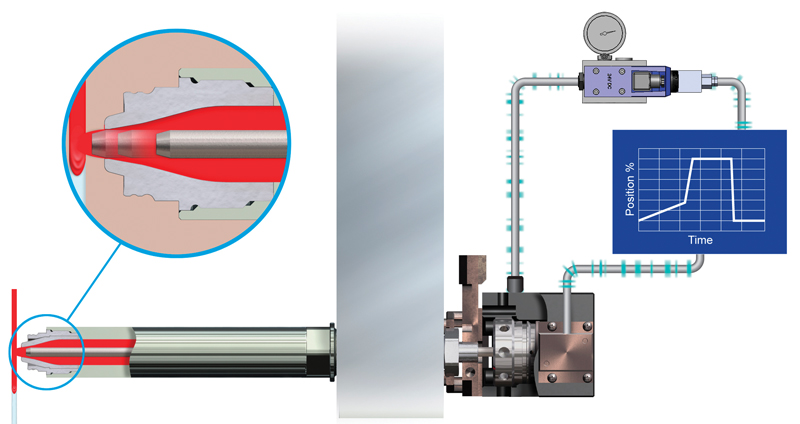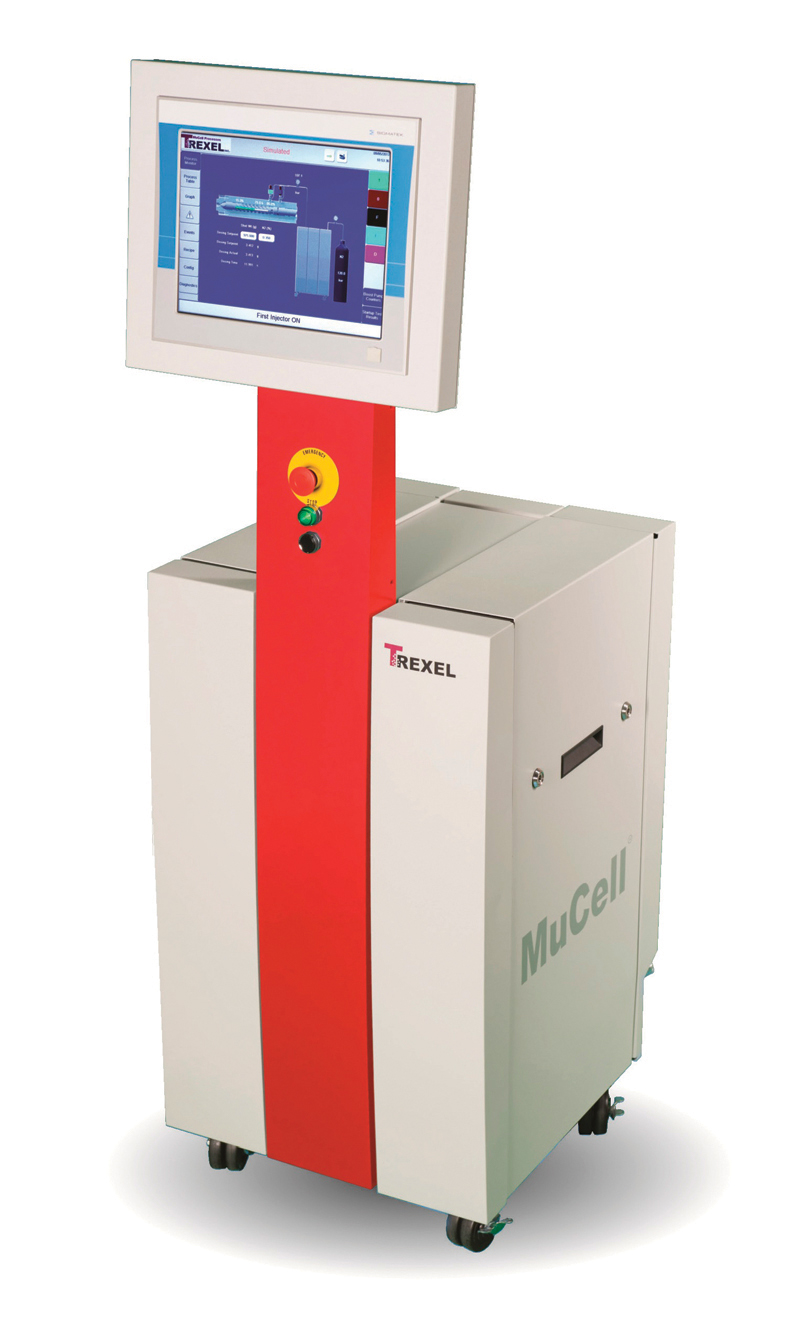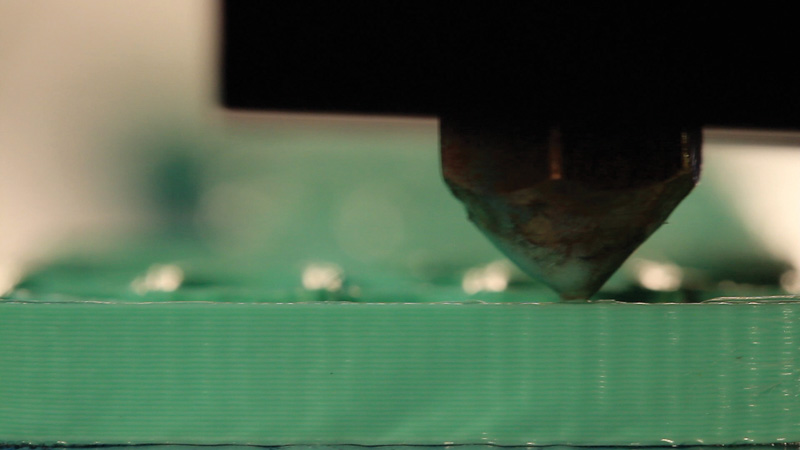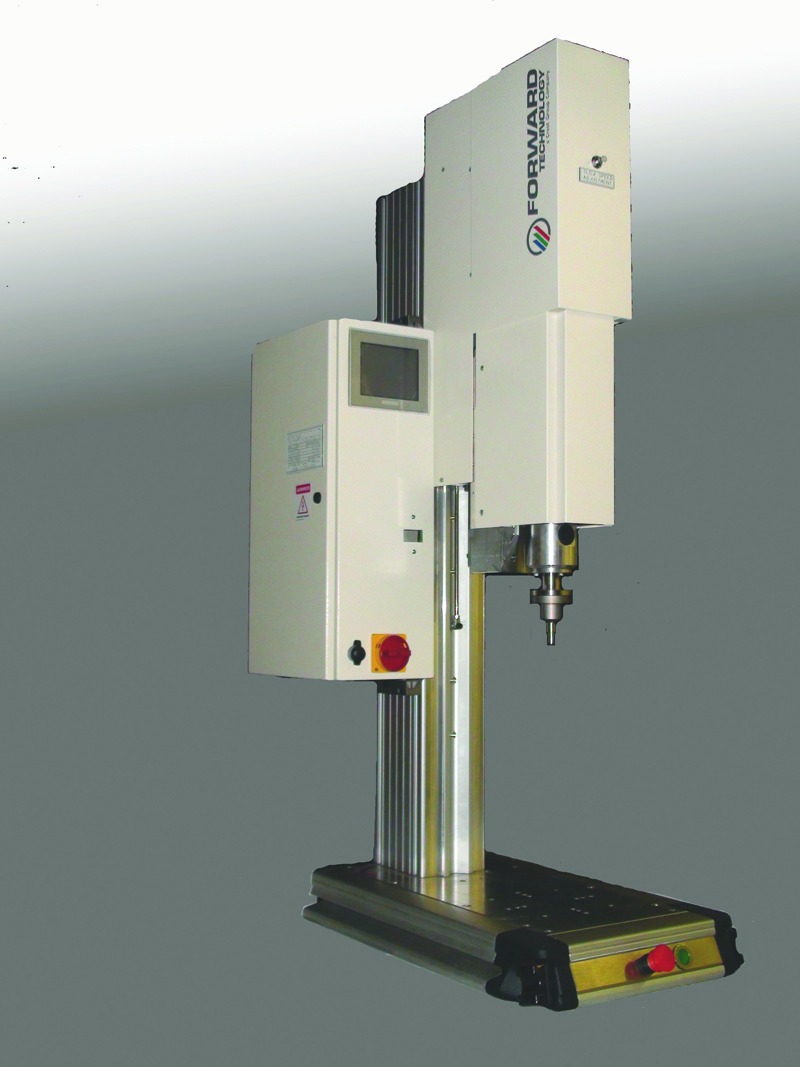
Photo courtesy of Synventive Molding Solutions

Photo courtesy of SPI

Photo courtesy of Trexel

Photo courtesy of Biome Bioplastics

Photo courtesy of Forward Technology

Michael Reedy, 1952-2013
Synventive Molding Solutions, a business of Barnes Group Inc., recently introduced activeGate, its new tool-based molding technology that helps provide control over the molding process, enabling the production of higher quality parts than were previously attainable with traditional hot runner systems.
The activeGate family of technologies employ position, pressure, and temperature sensors within the hot runner and mold cavities to provide independent melt-flow control at each individual gate. This gives users the ability to mold the highest quality parts through unrivalled process control, the company says. Benefits include higher quality surface finishes, higher production rates, decreased scrap, faster mold start-ups, and the ability to mold parts with complex geometries.
“Synventive continues to innovate and improve our products in ways that tangibly benefit our customers,” says Mark Moss, executive vice president, Synventive Product and Market Strategy. “Our activeGate products are enabling technologies—they provide product designers and molders the tools they need to create new and better plastic parts, parts that they couldn’t create before with existing hot runner system technologies.”
Trexel Inc., the exclusive provider of MuCell® microcellular foam injection molding technology, has recently signed a partnership agreement with Milacron that allows Milacron to incorporate the MuCell technology into its injection molding equipment. Under the agreement, Milacron will receive the rights to resell Trexel MuCell SCF gas-dosing equipment directly to its customers under the Milacron, Ferromatik, Uniloy, and Mold-Masters brands, while transferring the operating rights under Trexel’s patents to its end user without any added fees or costs.
“We believe that Milacron is uniquely capable to provide the complete melt distribution and control solution for MuCell systems,” says Bruce Catoen, Milacron’s chief technology officer. “Our extensive portfolio of primary processing equipment, combined with industry leading hot runner and control systems will allow MuCell technology to expand into new and untapped markets. Together with our partner Trexel, Milacron has proven the viability of MuCell in blow molding, co-injection, higher surface finish parts, and high-cavitation packaging applications. The light-weighting, low-tonnage, reduced warp and sink benefits of MuCell can now be exploited in markets that were previously not possible.”
The patented foaming technology involves the introduction of precisely metered quantities of atmospheric gases (nitrogen or carbon dioxide) to create a foamed part, resulting in high quality precision and engineered plastic components, while greatly reducing production costs associated with lower material consumption, shorter molding cycle times, and reduced machine clamping tonnage requirements.
For the automotive sector, the MuCell process enables component manufacturers to light weight plastic parts for overall vehicle weight reduction and improved fuel economy. The process also leads to predictable and repeatable part geometry, allowing for the use of lower cost polyolefin resins without warpage or distortion.
www.trexel.com; www.milacron.com
Biome Bioplastics, one of the UK’s leading bioplastics developers, has launched a new material for the 3-D printing industry. Made from plant starches, Biome3D is a biodegradable plastic that combines easy processing and a superior print finish, while offering much higher print speeds.
Plant-based plastics are a popular choice for 3-D printing, because they are much easier to work with during processing and are food-safe and odor-free. They are a great example of how sustainable alternatives can gain market share based on their performance, rather than just their “green credentials.” However, oil-based printing filaments are still used because they have a higher softening point and make more flexible models that will bend before they break.
Developed in partnership with 3Dom Filaments, Biome3D combines the benefits of both plant and oil-based printing filaments and demonstrates that high performance plant-based plastics can be the ideal material for the 3-D printing industry. Biome3D combines a superior finish and flexibility, with ease of processing and excellent printed detail, the company reports. In addition, and perhaps most importantly for the industry, it runs at much higher print speeds, reducing overall job times.
“The future of bioplastics lies in demonstrating that plant-based materials can outperform their traditional, oil-based counterparts,” explains Sally Morley, sales director at Biome Bioplastics. “Our new material for the 3-D printing market exemplifies that philosophy. Biome3D combines the best processing qualities with the best product finish; it also happens to be made from natural, renewable resources.”
Forward Technology, a manufacturer of standard and custom plastic welding equipment and testing systems, has announced a new high-speed orientation spin welder designed for smaller diameter and more difficult applications that require delivery of rotational speed at high precision. The unique spin welder is targeted for manufacturers of small-diameter components such as fittings, tubing, and fuel lines for the medical, automotive, and industrial markets.
The HS-OSW is a servo-driven spin welder that is capable of orienting part halves relative to each other with a positioning accuracy of ±1.0°. Exact start (home) and stop (final orientation) points can be programmed and precisely controlled. The HS-OSW runs up to 7000 RPM, unlike standard servo models which operate at up to 4000 RPM. It features an innovative dual-speed proportional valve for pneumatic pressure control, allowing the user to program individual settings for initial part approach speed, contact pressure, weld pressure, and cooling pressure in pass code protected memory. This capability reduces cycle time by 20% compared to standard single-pressure, servo models and also improves repeatability, the company notes.
A modular design allows adaptability to a variety of production configurations. Controller height can be repositioned or removed from the press and relocated to a user-preferred position. And zero-force cycle activation switches reduce operator fatigue compared to mechanical start switches, Forward Technology adds.
Royal DSM says a combination of two of its most innovative thermoplastics technologies has resulted in high-performance pressure vessels that are ideally suited for use as lightweight fuel tanks for automobiles running on compressed natural gas (CNG) or hydrogen. DSM is able to reduce the weight of the tank by up to 70%.
Hydrogen and natural gas are claiming their place in the field of cost-effective and low carbon-footprint fuels for use in automobiles. Countries with major natural gas reserves are looking at the advantages of using CNG as an alternative fuel which reduces CO2 emissions by 15%, compared to current solutions in petrol or diesel.
A traditional steel tank of 40 L weighs around 60 kg, while a composite “Type IV” tank with Akulon® Fuel Lock liner can weigh down to 20 kg. Every 10 kg removed from a vehicle translates roughly into a reduction in CO2 emissions from the vehicle on the road of one gram per km. Type IV pressure vessels are based on plastics and continuous fiber reinforcements, unlike Type I, II, and III pressure vessels, which contain metal components.
DSM demonstrated a tank with a liner blow molded in its Akulon Fuel Lock, a polyamide-6-based engineering plastic with a very high barrier to hydrocarbons, at the Fakuma 2014 plastics processing exhibition in Friedrichshafen, Germany, in October. The tank can be wrapped in a tape based on thermoset or thermoplastic resins, including its EcoPaXX® polyamide 410.
Students at one of America’s most respected design schools are hard at work transforming used plastics into new and glamourous clothing for a fashion show at the premiere plastics exposition for 2015. SPI: The Plastics Industry Trade Association has partnered with the Savannah College of Art and Design (SCAD) to design and create garments out of recycled, reused, or repurposed plastics.
The clothing will be modeled in the Pursuing Zero Waste Fashion Show at the opening ceremony of NPE2015: The International Plastics Showcase. The garments will be based on designs selected by SPI from submissions by the students at SCAD’s School of Fashion and will include 3-D printed plastic accessories.
NPE2015 will take place March 23-27, 2015, at the Orange County Convention Center in Orlando, Florida, USA. Following the opening day fashion show on Monday morning, the garments will be displayed throughout NPE2015 in the Zero Waste Zone, a special sector of the exhibit floor devoted to the plastics industry’s mandate to reduce, reuse, or recycle its materials. Attendees will have the opportunity to get an up-close look at the materials selected and used by the students and learn about their inspirations for the designs.
“Environmental issues, such as recycling, are especially important to the upcoming generation represented by the students at SCAD, and we felt it important to show the world their vision for plastics use in the future,” says Brad Williams, SPI director of sales and marketing. “We chose to work with SCAD because of its outstanding reputation among schools of design and its forward-looking, creative approach to technology. I have seen the students’ initial designs and I believe NPE2015 attendees will be excited by the creative outfits they will see at the fashion show.”
New flame-retardant films from DuPont Teijin Films promise to help design engineers in the electronics, transportation, construction, and label industries deliver high performance at low cost. The halogen-free, white Teijin® Tetoron® UF Polyethylene terephthalate (PET) films and the Teonex® QF polyethylene naphthalate (PEN) films combine chemical resistance, strength, and insulation properties with the VTM-0 flame rating available from UL 94 flame classification testing.
“We have applied our proprietary science to help our customers deliver high-quality products for these cost-sensitive industries,” says Scott Gordon, business development manager, DuPont Teijin Films. “Traditional PET and PEN polyester films are well known for their performance and reliability characteristics, and these two new film types have combined those properties with the highly desired VTM-0 certification.”
Other commercial film types offer inherent flame retardance, but often at a high price. Most commercial polyester films are inherently resistant to heat, chemicals, and water absorption; however, the typical flame classification rating is at the VTM-2 level or higher. Consequently, PET polyester films have been used only in a limited range of electronics applications, or in some cases the PET’s flame retardance was achieved through the use of additives or coatings containing halogens, which are no longer permitted in many industries.
Michael Reedy (September 11, 1952–August 16, 2013), founder of Reedy International Corporation, began with a goal to help plastics producers maintain productivity and profitability while reducing harmful emissions. Government regulations forced companies to reduce their full-time capacity because they were quickly reaching their emissions quota. Some of these regulations necessitated a reduction of operation time by as much as 40%, leading to staff reductions and lost profits.
By introducing his non-toxic, FDA-approved chemical foaming and nucleating agents, Reedy was able to help companies reduce emissions by up to 40%, enabling them to return to full capacity. They also saw unexpected benefits like less material embrittlement, better flexibility, improved surfaces, and lower energy costs.
Filling that need was the first step in what would become a global enterprise. By seizing the opportunity to offer his environmentally responsible solutions, Reedy International was on course to transform the plastics industry. Now celebrating 25 years, the company says it continues to advance in the area of chemical foaming additives. Since its inception, it has been committed to the future of plastics.
